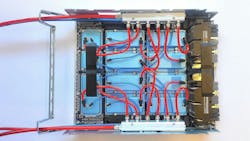What’s the Difference Between Immersion and Direct-to-Chip Liquid Cooling? (Download)
A massive shift is taking place in today’s data centers as rack power consumption skyrockets to levels never thought possible. Driven by the emergence of compute-intensive artificial-intelligence (AI) and high-performance computing (HPC) applications, data centers have quickly transitioned from needing to cool 10- to 20-kW racks with air-cooling strategies to cooling 120-kW racks powered by NVIDIA’s Grace Blackwell superchip—and that’s just for one rack!
Air-cooling methods don’t stand a chance of cooling this amount of heat, and, as a result, has paved the way for novel liquid-cooling technologies that fall into one of two categories: “direct-to-chip” or “immersive.” Unlike traditional air-based approaches, these technologies use liquid, either water or dielectric fluid, to remove heat from the equipment.
